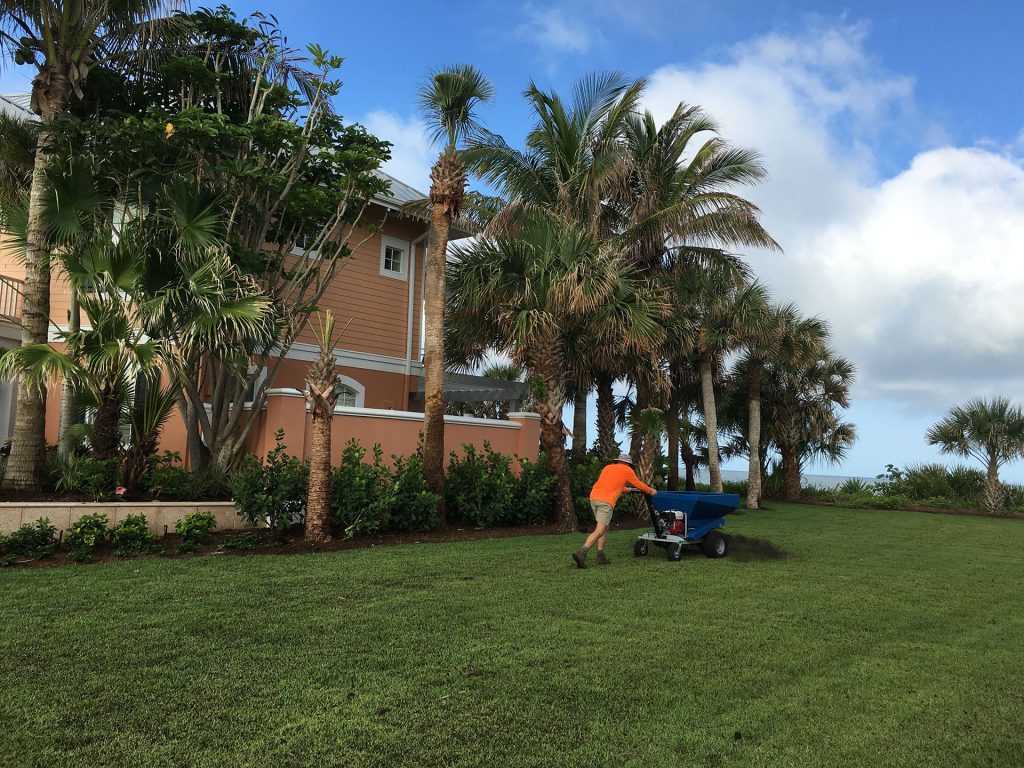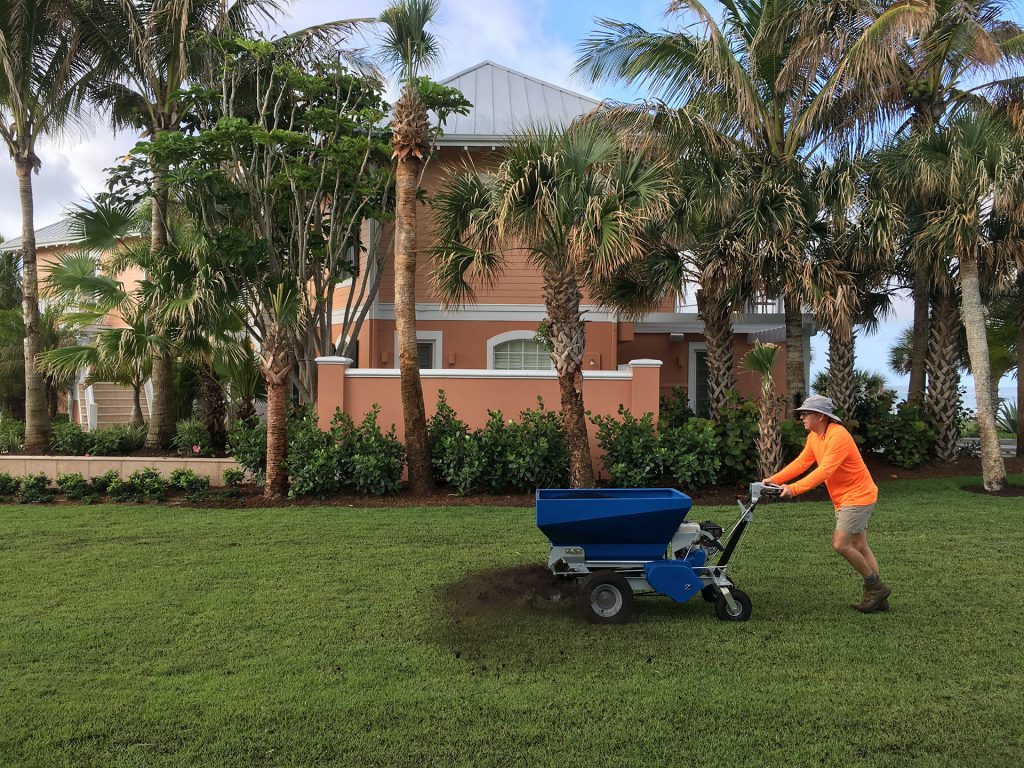The Use of Compost as a Soil Amendment – Physical Effects: Soil Structure and Nutrients
Compost performs two very important, but contradictory functions in clay and sandy soils like we have in Sarasota and throughout Florida. On the one hand it improves drainage in clay soils and on the other hand improves water retention in sandy soils. In both cases what is really happening is that compost is improving soil structure.
Good soil structure-also defined as good tilth-is the basis for any good landscape. Good soil structure has good soil aggregates; small, irregularly shaped particles or clumps. This clumping of material opens up spaces or channels between the aggregates, space which allows air to circulate and water to drain. These channels also provide easy paths for plant roots to follow. Plants in loose, friable soil develop deeper and more complex root systems than do those in heavy soils. Since some nutrients such as phosphorus tend to stay where they are, roots must come to them. A large root system means that the plant can access more of these key nutrients which might otherwise remain out of reach.
Soil with good structure will hold water better than sandy soils do and drain better than clay soils do. Compost in sandy soils ensures that soil holds water long enough to dissolve nutrients-an essential role since plants can only use the nutrients when they are dissolved.
Soil structure is also very important for soil biology. Good structure makes a soil a better habitat, that attracts more soil organisms.
An aerobically produced compost provides vital micronutrients such as iron, manganese, copper and zinc which are essential to plant health in minute quantities and which are often missing from synthetic fertilizers and are overlooked by most landcapers.
GreenTech offers professional application of advanced compost formulas with soil topdressing. Use of composting will improve the quality of your growing environment while reduce the need for excessive chemical fertilizers and even pesticides.


